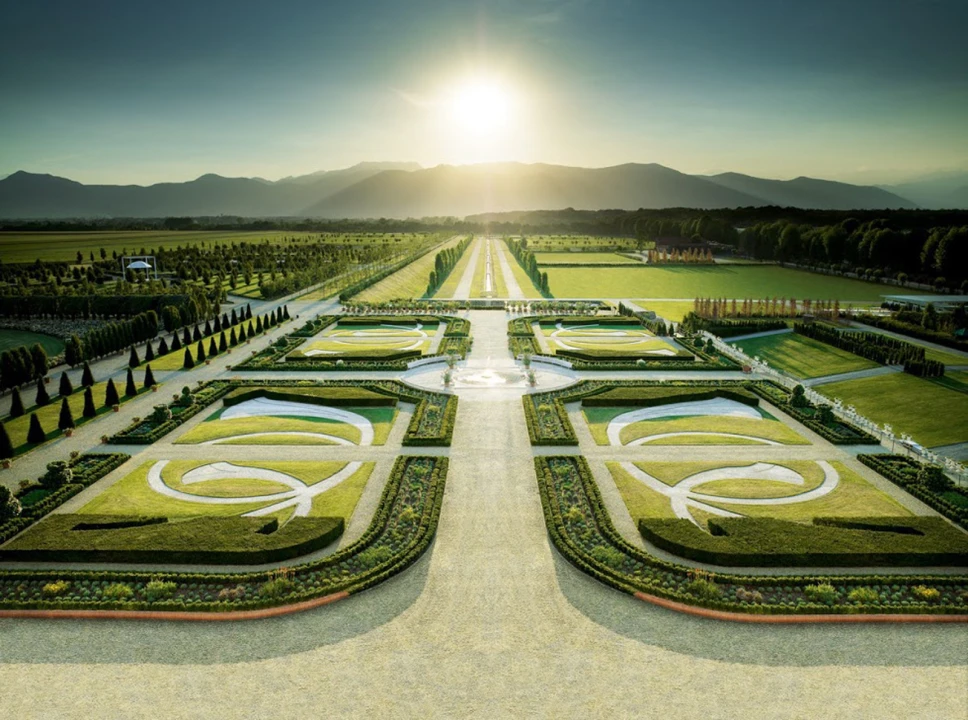The Venaria Royal Palace, 10 kilometers from Turin, is extraordinary and immense. A Unesco's World Heritage Site, is one of the finest examples of Baroque architecture of the seventeenth and eighteenth centuries, both in the palace and in the gardens.
Today it is a “contemporary palace” open to all and each year offers a program of studies, activities and workshops for schools so that the visit become an instrument of knowledge and a real opportunity to educate about the historical, artistic, cultural and landscape beauty if this place.
Considered one of the masterpieces of Baroque, the Palace stretches along 2,000 meters, in a succession of halls and rooms where we can trace the history and excitement of the Savoy court. Among the places of beauty, we can mention the charming “Salone di Diana”, designed in the mid-seventeenth century by Amedeo di Castellamonte; the solemn “Galleria Grande”; the “Cappella di Sant'Uberto” and the “Scuderie Juvarriane” which collect the works of Filippo Juvarra from the eighteenth century.
Gardens
The gardens stretch over 50 hectares, combining ancient settlements and contemporary works. The present appearance dates back to the eighteenth century work of the architects Michelangelo Garove and Filippo Juvarra, who planned them by developing the geometry set in the seventeenth century. Designed as a place for recreation, entertainment and leisure, they are divided into Upper and Lower Park Park.
The Upper Park, with its characteristic geometric square tangles pattern, includes:
- The Grand Parterre with flowers, lintels grass and potted citrus trees, at whose crossroads was placed the evocative installation by Giovanni Anselmo;
- the Allee, aka the tree-lined streets, reconstructed from drawings and reliefs of the eighteenth century and lines in the ground highlighted by aerial photographs;
- the groves and “Fantacasino”, designed by Massimiliano Colangelo, inspired by the shapes and proportions of the “Temple of Diana”: dedicated to children and families, it shows a modern interpretation of games, cars, fantasy figures from the eighteenth century;
- The Rose Garden, built on part of the "English Garden", designed by Juvarra, with facilities of modern fashion, pergolas covered by the “Alberic Barbier” rose, other climbing plants and remontant roses called “Marie Pavie”.
The Lower Park includes the large water basin of Peschiera (11 million liters of water), the space of the “Giardino delle Sculture Fluide” by Giuseppe Penone, caves from the seventeenth century, the remains of the “Fountain of Hercules” and the “Temple of Diana” (where live a couple of white swans, connected by a channel of water), and the vegetable gardens and orchards of the biggest Italian Potager Royal.
In an area of about 10 hectares, around the “Cascina Medici del Vascello”, where in the '600 and '700 extended part of the Gardens, and in the ‘800 the extensive farmlands part of the Estate of the Royal House, are reconstructed gardens and orchards, on the basis of what in the seventeenth and eighteenth centuries was a Potager: a square, including cultivation of flower beds, pools, fountains, water features, espaliers of fruit trees and pergolas for flowers and vegetables, cultivated according to the principles of agroecology.
The orchard, which embraces the “Cascina Medici del Vascello”, hosts 1,700 trees planted in the fall of 2010, of varieties historically present in Piedmont and very interesting for the organoleptic quality of their fruits. The trees are raised in two main forms: a candlestick and an espalier. The trees of the same variety are collected in groups, to facilitate the care and the harvesting of the fruits. The fruits are for use immediately, transformed into preserves and, if abundant, also directly sold.




